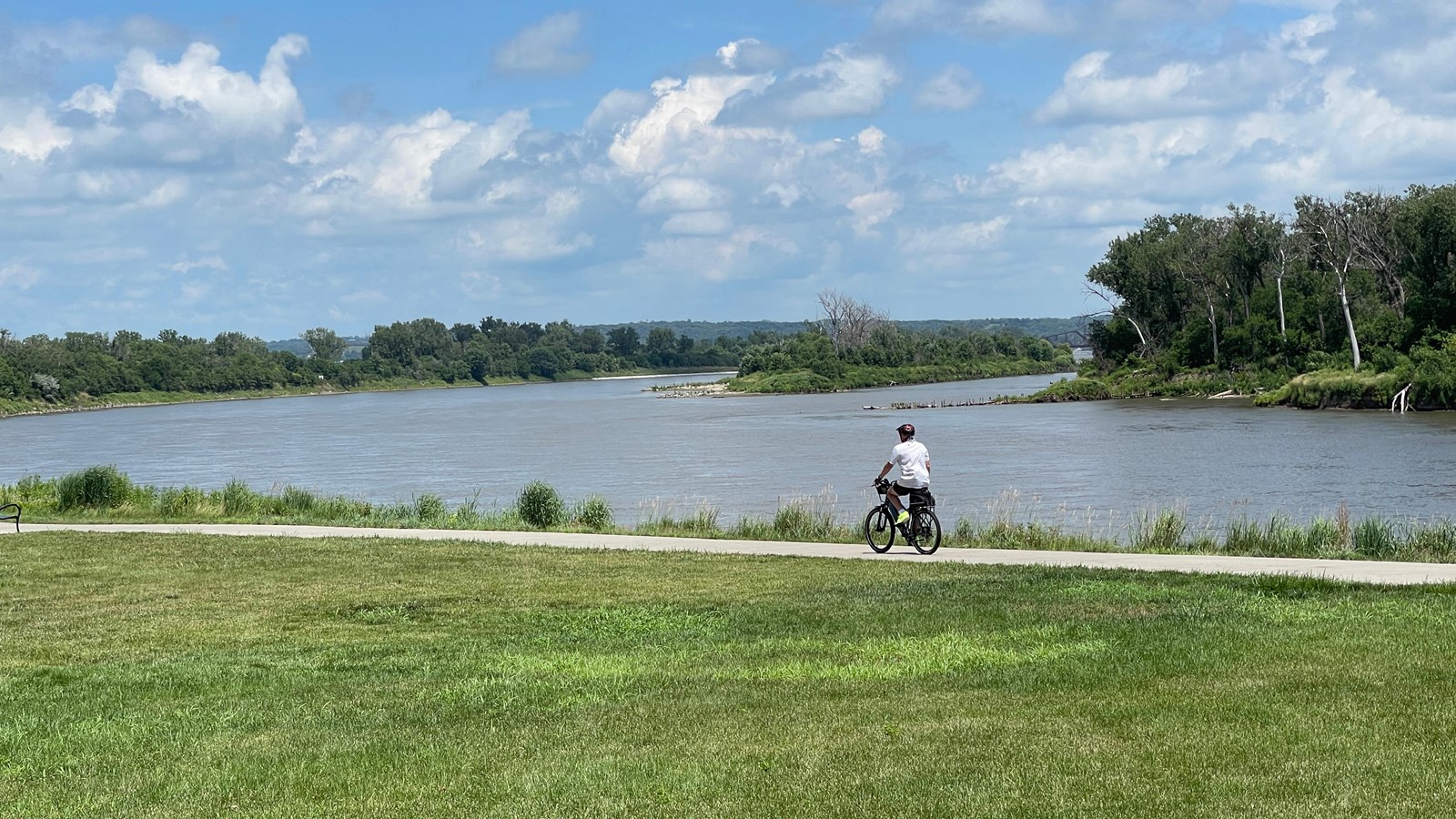Last updated: August 4, 2025
Place
Middle Mormon Ferry, Council Bluffs

NPS Photo
On June 14, 1846, Brigham Young’s vanguard company reached the Missouri River—the boundary between present Iowa and Nebraska. On the opposite bank (in the vicinity of today’s Bellevue, Neb.) stood Peter Sarpy’s American Fur Company trading post, with an associated village of French traders and Indians. Young was anxious to cross the river, but the Missouri was too deep for wagons to ford, and Sarpy’s ferry—a small, dinghy-type boat used for the fur trade—could not accommodate the approaching emigration of thousands of wagons.
In a joint venture with Sarpy, Young set 100 men to building a new flatboat and establishing three ferry landings along the riverbank. These landings, or dugway ramps for loading and unloading, were arranged in a V pattern with the tip of the V on the east (Iowa) side of the river at Council Point, a south landing on the west bank at present Y Street in Omaha, and a north landing near the west end of today’s Veterans Memorial Bridge in Omaha. The workmen strung a strong V-line rope from the Iowa landing to each of the two Nebraska landings.
The ferry, attached to the south leg of the rope, would be poled away from the Iowa dugway into the river current, which would carry it along the rope line to the western bank. For the return trip, draft animals walking a tow path along the west riverbank would pull the boat upstream to the northern dugway. Operators there would attach it to this leg of the rope line, pole the ferry out into the current, and once more allow the river to sweep the boat back to the east bank landing.
The flatboat could carry three loaded wagons and their oxen on each trip, and it served to transfer thousands of Mormon pioneers to the west side of the Missouri River. This crossing became known as the Middle Mormon Ferry—“middle,” because several other ferry crossings soon were established.
That October, the emigrants moved this ferryboat north to better accommodate traffic to newly established Winter Quarters (North Omaha). This new establishment, the North or Upper Mormon Ferry, operated near today’s I-680 bridge at Florence, Neb. A third ferry crossed the river between Trader’s Point, IA, and present Bellevue, NE.
A fourth crossing, established in 1850, served traffic near the confluence of the Missouri and Plattsmouth rivers. The ferries carried not only thousands of Mormon pioneers but also later traffic bound for California and Oregon.
Site Information
Location (Veterans Memorial Bridge (US 275), Between Omaha, NE and Council Bluffs, IA)
The river channel has migrated about a mile west of its 1846 location, so no visible remnants of the dugways remain. Eastbound travelers on the Veterans Memorial Bridge can view the Missouri River while driving toward Council Bluffs. (Stopping on the bridge is discouraged, however.)
For a leisurely view of the river, visit Omaha’s Bob Kerrey Plaza and Pedestrian Bridge on Riverfront Drive. A ground-level view of both sides of the riveris afforded by Omaha’s 10th Street, a levy road runs between the river and a Missouri River water treatment facility on the Nebraska side of the river. There, visitors can appreciate the challenge presented by the Missouri River and the ingenuity of the current-driven rope ferry system devised by the pioneers.
o historical signage or other amenities are provided at any of these locations.
Safety Considerations
